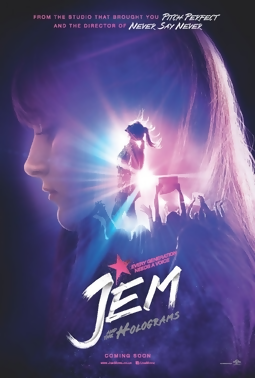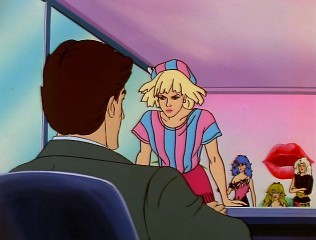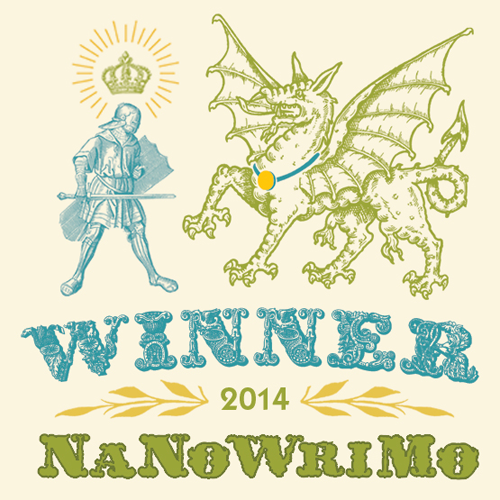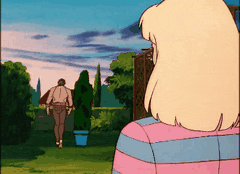Lacey Louwagie's Blog, page 7
November 23, 2015
Fairy Tale Book Review: Snow White and the 77 Dwarfs by
 Snow White and the 77 Dwarfs by Davide Cali
Snow White and the 77 Dwarfs by Davide Cali
My rating: 3 of 5 stars
I’m going to let this conversation with my husband serve as my review:
Him: This book is stupid!
Me: Why is it stupid?
Him: It has no point! There’s no moral.
Me: It does to have a point! The point is that doing housework for a bunch of men really sucks, and it’s not a good deal even if it lets you hide from the witch.
Him: Well, yeah, but we don’t see what happens to the dwarfs after she leaves. They don’t LEARN anything. Like that maybe they should have appreciated her a little more.
It’s a valid criticism. This book would’ve been better if the dwarfs realized how much they made Snow White’s life suck.
November 16, 2015
Writing Book Review: Second Sight by Cheryl Klein
 Second Sight: An Editor’s Talks on Writing, Revising, and Publishing Books for Children and Young Adults by Cheryl B. Klein
Second Sight: An Editor’s Talks on Writing, Revising, and Publishing Books for Children and Young Adults by Cheryl B. Klein
My rating: 5 of 5 stars
The market is saturated with books about the craft of writing and the nuts and bolts of selling, publishing, and marketing your work. But in too many of these resources, revision gets relegated to a passing mention, something along the lines of, “After you’ve finished your revisions,” or “Then revise!” For many beginning writers, revision can be a major stumbling block — they might know it’s needed, but where to start? And just as importantly, where to end?
Cheryl Klein’s “Second Sight” is a welcome addition to the writing canon that fills that gap. It is JUST about revision. In this book, writing the first draft and publishing are relegated to passing mentions. I am a “first-draft” dreader — I much prefer the process of revision to getting a story out for the first time. So even though I feel as if I’m fairly good at knowing what needs to happen when I go in for a second, third, or sixth draft, this book was full of insights and ideas to refine my process further. And for those who feel at a loss about where to begin with this whole revision thing, this book could be a godsend.
It helps that Cheryl Klein, senior editor at Arthur Levine books, prefers to edit the types of books I also prefer to read and write, so at some points it felt like she was “reading my mind” in terms of what was important about storytelling. She is also clearly passionate about what she does and ambitious about doing it well, which is very inspiring. Although the book is tailored to children’s writing, I think a lot of its tips could be applied to other fiction as well. But if children’s literature is what you write, I strongly suggest adding this book to your arsenal. I look forward to using its techniques to return for a fourth go at my middle grade novel, which has sat “stuck” for years in that awkward place between frequent rejections and me being at a loss about what might be wrong with it. Thanks to this book, I now have a much better idea of what my next steps should be, and I can’t wait to take them.
Sign of a helpful #writing book (excessive page markings.) #books
A photo posted by Lacey Louwagie VenOsdel (@laceyvenosdel) on Nov 15, 2015 at 8:07am PST
November 9, 2015
Fairy Tale Retelling Book Review: Cress by Marissa Meyer
 Cress by Marissa Meyer
Cress by Marissa Meyer
My rating: 4 of 5 stars
I deprived myself of this book for far too long because I didn’t want to read any Rapunzel retellings while I was working on the second draft of my own. But this one was worth the wait. I loved Cress as a character, her social awkwardness and naivete juxtaposed with her coding and technical genius, as well as her deep knowledge of the other characters and obscure minutiae gleaned during lonely years scanning her net screens. Meyer managed to make her a “strong” character without falling into the “strong = feisty” trap, and she is well realized, complex, and fully developed. Getting to know her and following her story was my favorite part of this installment, making me somewhat impatient with the Cinder and especially the Scarlet chapters.
I also really liked Meyer’s “take” on the Rapunzel story, which paid homage to the original in several subtle and overt ways while not being constrained by it. (view spoiler)[(Although I think her crush on Thorne is sweet, I wasn’t particularly behind the “romance” aspect of this story and sort of hope they don’t end up together. I want Cress to have more real-life experiences before she settles down with the first guy who caught her eye!) (hide spoiler)]
The development of Cinder’s story is well done, as well as the mounting tension as Kai prepares to marry Levana and wrestles with his lingering confusion about/attraction toward Cinder. (view spoiler)[ The love scene between them near the end is particularly tender and had my heart pounding far more than the Cress/Thorne romance did, perhaps because it feels more real and also more hard won. I do hope they get their happy ending. (hide spoiler)]
Scarlet’s story took the series into particularly dark terrain, darker than we have seen up until this point, which was a little disconcerting to me — this is my “light” reading, Marissa Meyer! Although Scarlet’s story interested me least of all the threads, I did like the glimpses it gave us of what may be to come in Winter, which I will hopefully be reviewing soon!
November 2, 2015
Retelling Book Review: Fairest by Marissa Meyer
 Fairest by Marissa Meyer
Fairest by Marissa Meyer
My rating: 3 of 5 stars
3.5
Although I didn’t rate this book as highly in the others in this series, some parts of it really impressed me.
In a lot of media, villains are treated in one of two ways: as exclusively evil (think almost every depiction of Snow White’s wicked queen you’ve ever encountered), or as tragically misunderstood (think Wicked: The Life and Times of the Wicked Witch of the West). I expected this book to go the second route — that even after getting a sense of how evil Levana was in Cinder and Scarlette, that this book would somehow “redeem” her and awaken all sorts of conflicted feelings when she appeared in the villain’s role in all the other books.
Nope, this book lets Levana stay evil.
And that is the beauty of it: that it lets Levana truly BE evil (as opposed to misunderstood), but that it doesn’t make that ALL that she is. There are moments where she deserves and receives no sympathy: (view spoiler)[I mean, it is hard to get behind someone who plans to murder a three-year-old, then a husband that she loves, all for political gain. (hide spoiler)] But then there are also moments in which you can’t help but admire her — in the way that she really DOES care about being a good ruler, even if she has a misguided idea of what that means. Meyer does a good job of contrasting her with Channery, who is purely selfish and shallow and only enjoys being Queen for the parties and attention. Levana, on the other hand, takes an interest in Lunar politics, wants her country to succeed, and has a misguided sense that everything she does is for Lunar’s own good. Patronizing to be sure, but not purely evil. The book shows Levana in some of her most vulnerable moments — longing for a man who will never love her, self-conscious about the deformity she hides beneath her “glamour.” At the same time, it never excuses her horrible behavior even as it lends some understanding.
The reason I gave this book fewer than four stars is because, since it covers a span of about 10 years, there were places where it seemed to slow down as Meyer used summary to transition from one “important” event to another one. And the ending was so abrupt! I was listening to it on audio, so I didn’t have the same sort of warning one has when reading (and you can see you are on the last page, for example.) So when the narrator’s voice came on being like, “We hope you have enjoyed this production …” I was like WTF? THAT was the ending? It’s not particularly satisfying — but then I suppose the way the Lunar Chronicles ultimately resolve will tell us how Levana’s story ends. It was nice to have the opportunity to also see how it began.
October 27, 2015
Retelling Movie Review: What REALLY Ruined the New JEM Movie
 I went into the new JEM movie expecting to hate it. In fact, I even judged myself a bit for letting my curiosity get the better of me to support a movie that I was pretty sure was going to crap all over my childhood.
I went into the new JEM movie expecting to hate it. In fact, I even judged myself a bit for letting my curiosity get the better of me to support a movie that I was pretty sure was going to crap all over my childhood.
Still, I couldn’t totally shake the excitement of new JEM material as the opening credits rolled. I told myself early on to step back from comparisons to the original. After all, I am a writer and reader of retellings — so I went into the movie thinking of this as a “retelling” of the JEM origin story that took some elements from the original and remixed them in their own way.
Spoilers for the movie begin after this point, so be warned.
Thinking of it as a “retelling” allowed me to cope with the introduction of Aunt Bailey and the reduction of Synergy to a glorified home movies projector. It allowed me to accept Eric Raymond’s sex-change to Erica Raymond, the loss of Rio’s purple hair (the one thing that was REMOTELY interesting about him), and his new familial relationship as Erica Raymond’s son.
Here’s what I couldn’t accept: the way Jerrica Benton was reduced to an insecure teenager with her big, pink-clad eyes always turned toward Rio to save her.
Yes, what ruined the movie can be summed up in one word: Rio.
The original TV series was revolutionary for the way it never shied away from letting the women’s storylines — whether Jem and the Holograms or the Misfits — always take center stage (no pun intended.) Rio was relegated to sidekick and plot device status — sort of like most of the female characters in every superhero franchise. And let’s not forget that he was Jem’s road manager: HE worked for HER. Yes, he had a female boss. And he was secure enough in his masculinity not to let it bother him, even if he did need to kick a potted plant once in a while to cope.
In the new movie, Rio is the son of Erica Raymond. That means that he is the heir to Starlight Music. And in the movie’s final scenes, he finds a copy of his father’s will, which deeds Starlight Music to him “whenever he thinks he’s ready to accept it.” So he’s like, “Now, baby!” and fires his mom. This is good for Jem because his mom was a total creep who pressured Jem to go solo and ditch her sisters/band, but Rio “gets” her. So, yay, he saves the day!!!
But wait, there’s more. When Jem is giving her last performance on a three-show run, the editor of Rolling Stone comes up to Rio and is like, “Great band! What are they called?”
Rio gives it a moment’s thought and is then like, “Let’s call them … the Holograms. Jem and the Holograms.”
[Excuse me while I wretch.]

Jerrica at work, chewing out Eric Raymond.
So, we’ve already taken a look at the role Rio played in the original series. But in case you’ve forgotten, JERRICA was the heir to Starlight Music, and Jerrica ran that company. One of the best things about the series was that it showed little girls that there was more than one way to be a woman — it wasn’t all about partying on stage. It could also be about signing contracts and managing a budget. And yes, we actually saw Jerrica do these “mundane” business-y things in the cartoon show, as well as the more assertive things like fighting another label for a band they both wanted to sign. Most little girls are understandably enamored of Jem, but Jerrica is one of the best role models I’ve ever seen in a children’s show. Now that I’m an adult, I relate far more to her than to her more glamorous counterpart.
She was so much more than the insecure teenager the movie reduced her to.
Also, who could forget the three-year, drawn-out drama that was the “Will she/won’t she?” question of whether Jerrica would ever tell Rio that she was really Jem? I kept expecting her to come clean in the last episode, but she never did — she ended the series as much a mystery to Rio as she was when she first appeared on the scene.

This publicity shot is telling — we see Rio’s full face and body, while the female characters are reduced to “pieces.”
Not so in the remake. Less than halfway in, Jerrica slinks into Rio’s room at Starlight Mansion (oh, and did I mention that Rio has basically been assigned to “babysit” Jerrica and her sisters?) and confides in him that she’s having an “identity crisis.” She expresses the struggle to find who she “really is” between her public persona and her private one. She tells him there is “no one else” she can talk to about this — even though all three of her sisters are down the hall and have WAY more context about this than Rio possibly could. But it all plays into making Rio, although way less glam than his animated counter part (seriously, no purple hair?!?), essentially the center of this retelling — despite the fact that he’s about as interesting as a box of hammers.
So, to recap: In the original JEM, Jerrica owned her own record label. She and her band named themselves. She kept who she was a mystery from everyone, including Rio, except the Holograms. The cartoon series depicted an “inner circle” of women’s friendship that nothing else could penetrate, while the movie lets Rio “save the day” with his acquisition of Starlight Music, reassure Jerrica about who she “really is” on the inside, and, oh yeah, GIVE JEM AND HER SISTERS THEIR FREAKIN’ IDENTITY!
 Also, in the one tiny cameo the Misfits make during the end credits (which is probably the best part of the movie), Erica Raymond convinces them to come back to work for her by telling Pizazz that Rio has fallen in love with Jem. And THAT is what motivates the Misfits to set on a path to “destroy” Jem and the Holograms — an unspoken but heavily implied unrequited love between Pizazz and Rio. As if Pizazz ever gave a flying fig for Rio. (As if ANYONE would, considering how lame-ass he is in this movie. He’s not even man enough to rock purple hair.)
Also, in the one tiny cameo the Misfits make during the end credits (which is probably the best part of the movie), Erica Raymond convinces them to come back to work for her by telling Pizazz that Rio has fallen in love with Jem. And THAT is what motivates the Misfits to set on a path to “destroy” Jem and the Holograms — an unspoken but heavily implied unrequited love between Pizazz and Rio. As if Pizazz ever gave a flying fig for Rio. (As if ANYONE would, considering how lame-ass he is in this movie. He’s not even man enough to rock purple hair.)
I’m not such a purist that I think every little detail must remain the same from one incarnation of the Jem story to the next. After all, what would be the point if it was exactly the same except played out by live actors? But I DO take umbrage at the fact that the movie didn’t just tweak some details. Instead, its idea of an “update” was to strip Jem of all her autonomy and tie her very identity irrevocably to a dude.
AND THEN director Jon Chu has the gall to say THIS about the movie in an interview with the Verge:
The one thing [Christie Marx] asked is what she wished she’d done in the series itself: pay more attention to the girls as sisters, and pay more attention to that sisterhood. I took that to heart, and our movie was about that sisterhood and family anyway, so it definitely helped.
All I can say is that Jonny needs to go back to Sisterhood 101.
He also claims that:
The hard part was, in the cartoon she’s Jerrica and Jem, and [her love interest] Rio doesn’t know that. She’s constantly debating whether to tell him or not, and which one is he going to choose? And those type of things just don’t translate to live action. I think you’d be like, “Wait, what, she’s waiting for him to choose her, or the other her?” Some of those things, even though it’s core to the cartoon, we have to make it something that people who don’t know anything about Jem can accept.
Yeah, so, you know to make this movie more palatable to a live-action crowd and/or a new audience, we have to make sure the Dudebro is the one to save the day. Because things like women in leadership positions just don’t translate well to live-action — oh, unless you’re planning to change male leadership to female leadership (Erica Raymond) for the sole purpose of deposing it and proving that women suck as leaders in the first place. Apparently a mysterious lead whose love interest doesn’t know who she really is also doesn’t translate — I mean, none of the movies in the Batman or Superman franchises have ever pulled it off, right? And let’s not forget, the dual identity thing is just TOO COMPLICATED for people new to the storyline. Even though plenty of six-year-olds had NO trouble following this plot point in the original series.
I think this team saw lots of nifty fashions, funky hair colors, and sexy ladies — and decided to “rebrand” keeping those elements with no respect for any of the rest. This is a team that truly did not “get” Jem & the Holograms. Sure, it was fun seeing live-action replicas of Jem’s fabulous 80s wardrobe, but underneath that fluffy exterior the Jem series asked big questions of its young viewers: questions about identity, artificial intelligence, and what is real and what is not. It tackled topics as weighty as infidelity, drug addiction, adult illiteracy, child abuse, and the pain even an adult child feels when her parent is dead or distant. And it did it all in a way that let the series’ female protagonists work through these issues on their own — Rio may have saved Jem from an explosion or two, but he never had to save her from herself. And she certainly wasn’t going to hand over the keys to Starlight Music.
If only Hasbro had done the same.
For further reading:
How the movie exploited Jem’s original fans.
3 Reasons why Jem & the Holograms is Hollywood’s worst cartoon-inspired flick
An interview with original JEM creator Christie Marxx about being shut out of the project
Forbes on Why This Moving Flopping is a Tragedy
October 19, 2015
Resisting the Siren Song of NaNoWriMo
 So, it’s that time of year again.
So, it’s that time of year again.
The time to start thinking about writing novels in November.
Even though I do not do NaNoWriMo every year, not a single November has passed since I first participated in 2005 that I haven’t thought about it.
This year I told myself it was completely out-of-the-question. Sometimes it takes me a full week to cobble together enough writing time to post a single entry in my Year in Disney Movies blog project. Despite having finally finished my Rapunzel novel, I am behind schedule on all my writing projects, including the little ones like book reviews. My work life is unpredictable, and life in general is unpredictable, so it’s been hard for me to clear the necessary “space” for writing. I still write almost every day, but not for as long or as many words as I would like. Certainly not long enough to churn out 1667 words daily.
Last week, a friend texted me to see if I would be doing NaNo this year. I told her no, but that I would still like to be invited to write-ins because I am always in need of more writing time.
I saw this friend in person yesterday. We chatted about NaNo. A flood of good memories washed over me. (I always remember the good memories surrounding NaNo rather than the feeling while I’m in the midst of it that I can’t wait for it to be over!) Even more tempting were the dreams of a future novel that could be birthed in just one month. My brain is full of novel snippets that are hoping for their chance to transform into real, growned-up novels, and NaNoWriMo is the best time for me to pull them out, heap them high with fertilizer, and scream maniacally, “GROW, GROW, GROW!!!”
I know that many of my novels probably would not have been written if not for NaNo — in fact, out of the 10 novels I’ve written, exactly half of them have been written during NaNo.
I’ve written, exactly half of them have been written during NaNo.
As if she could see all of this in my eyes, my friend said, “You’re totally going to do it, aren’t you?”
“I don’t knooooow,” I lamented, my resolve weakening.
I had a long conversation with my husband on the car ride home. He has lived through two NaNo Novembers, so he knows what the stakes are. He also knows that I perpetually feel as if I can never get everything I want to done. He said, “If you want to do NaNoWriMo, you’re going to need to get better at saying No.”
I know it’s true. I am horrible at saying no. Including to NaNoWriMo.
But now that I’m more than 24 hours removed from the peer pressure, I feel my resolve strengthening. But I DO want to keep the tradition of November being my time to really focus on my writing — perhaps I can finally get caught up on some self-imposed deadlines before the end of the year.
After all, the fewer writing projects I leave “hanging,” the free-er I will be come next November.
October 12, 2015
Finding “Space” to Write, Refilling the Well, and Cheating: Balancing the Need to Create with Everything Else
This past weekend, despite still recovering from a nasty cold, my husband and I drove six hours across the state to Hill City for a writer’s workshop. I’ve returned more tired than I ought to be after a weekend, but also recommitted to my writing, reassured that I’m on the right track, and grateful for the occasional opportunity to put my writing first in my life — something that I wish I could do every day, but which far too often gets sacrificed at the altar of Earning a Living.
Which is why, when we had a chance to ask all four featured “author-mentors” (Pamela Smith Hill, Kent Meyers, Norma Wilson, and Dan O’Brien) questions in the weekend’s final panel, I asked them how they managed to prioritize their writing against the competing demands of their “other” priorities (teaching, ranching, family, etc.) Although I have always managed to find time for my writing in one way or another, I can never seem to find enough. Next to my writing desk, I’ve kept a quote by Gish Jen for years:
“There is never enough time for writing; it is a parallel universe where the days, inconveniently, are also 24 hours long. Every moment spent in one’s real life is a moment missed in one’s writing life, and vice versa.”
Kent Meyers took the microphone first and said that he no longer gave pointers on how to find time for writing — he said anyone could find time. What is really needed is the space to write — not a physical space, although that is important, too, as Virginia Woolf so eloquently argued. But more a mental space — a way to push away the world’s competing demands for your time and to push aside the guilt for whatever is not getting done so you can write. “You have to acknowledge the guilt so you can forgive yourself and move on and write,” Meyers said.
Dan O’Brien shared advice he had received from a writing mentor: “If you want to write, you’re going to have to cheat. You will be cheating your employer, or cheating your health, or cheating your family. The only way to find time to write is to cheat someone else.”
Pamela Smith Hill mentioned the importance of discipline, but she also acknowledged the reality that, for many of us, whatever jobs we work at to pay the bills “draw from the same well” as our writing energy. Being aware of this can help us to be more forgiving — that well of creativity and will-power and discipline is NOT bottomless, and it needs time to refill. Sometimes, it’s just depleted, and we have to accept that. But she stressed that to do this, we also have to keep our promises to ourselves: “If I acknowledge that one day work has drained me too much to write, then I promise myself I will write for two hours tomorrow. And I keep that promise.”
All of this resonated with me and reminded me how important it is that I continue in this struggle to clear out not only more time for writing but also more space. This is particularly challenging as it relates to my work life. Seven years ago I left traditional, full-time employment to pursue freelance work full-time, with the goal of being able to better fashion my life around my writing. But with the loss of traditional employment comes the loss of financial security, and money worries can take up a lot of brain space. It also drives home more than anything else that old adage that “time is money” — unlike when I went into an office for eight hours every day, I was acutely aware that each moment I spent not working on projects for clients was time that I was not earning any money. It can be very difficult to choose an hour of writing over an hour of paid work, especially at the times in my life when I have been most financially insecure.
I managed to strike an almost perfect balance a couple years ago, with a steady, part-time, “traditional” gig that paid well but did not gobble up very much brain space and had very clearly defined boundaries. This allowed me time to meet commitments for my freelance clients and also left lots of brain space for writing. But this idyllic existence came to an abrupt end when expectations from my “part-time” gig changed and work started oozing into mornings, evenings, and weekends, squeezing my writing time and freelance commitments into corners and leaving me with perpetually tense shoulders and some decisions to make about what would stay in my life and what would have to go. Since then, I have been in a state of perpetual angst about work, time, writing, and the way the first of those three tends to beat the other two into submission.
Because, of course, it has the bully stick of money.
I don’t talk about money much on this blog — or at all — because it isn’t that important to me. But I feel financially secure for the first time in my life, and that is not something to give up lightly (especially since my cat is at the vet for dental procedures as I write this).
Still, for pretty much my entire working life I have fantasized about finding a steady, well-paying, monotonous job that requires very little thought and very little human interaction. Although I would certainly not find such a job nearly as satisfying as the jobs I’ve held that have allowed me to use my talent and my training, it would not encroach so much on the writing “space” I try to keep clear in my mind, nor would it draw so much from the creative “well” that would prefer to runneth over with the joy of creating on its own terms.
There is no easy answer to these questions of balancing life and art, but this past weekend has showed me that all creative people who also need to earn a living or care for family share in this struggle — and that what’s important is that we remain aware of it, look for opportunities to tweak our lives to foster what is most important to us, and continue to “cheat” as need be so that we don’t ultimately cheat ourselves of the work that is most meaningful to us — even when it doesn’t pay the bills.
September 28, 2015
My New Writing Hut is Complete!
After being “in-process” for over a year, my husband and I finally moved into our “outdoor” office — a space twice as big as our shared basement office — where he can code and I can write to our hearts’ content.
September 1, 2015
Fairy Tale Book Review: A Whole New World by Liz Braswell
I’ve mentioned my fan-fiction days in past entries, as well as my childhood obsession with Aladdin. Well, it seems like my prayer to Disney finally arrived on sympathetic ears 20 years later, when Disney released this darker, more “adult” rendition of its Aladdin story, which releases today. My review is below.
 A Whole New World by Liz Braswell
A Whole New World by Liz Braswell
My rating: 4 of 5 stars
Is this book little more than Disney’s attempt to cash in on both the current dystopia trend and the nostalgia teens and adults feel for the movies of their childhood?
Probably.
But did I totally eat it up?
Yes, I did.
As an “Aladdin” enthusiast who has not received new “canon” “material” for about 20 years, this book was a welcome rainfall in a dry and deserted area of my psyche. Because the story does not diverge from the movie version until Aladdin tries to escape the Cave of Wonders, the first 1/3 of the book runs parallel to the movie. However, in many ways this was my favorite part of the whole book. Although the events that occur are the same, Braswell explores them with a greater depth than allowed by the more “child-friendly” movie and ensuing sequels/TV series. This includes how very unromantic it is to be poor in Agrabah, how Aladdin developed his personal ethics when it comes to crime and how his path has diverged from friends who hold lower moral standards. Perhaps most importantly, it was not afraid to shed light on the resentment Agrabah’s impoverished held against the royal family, particularly the Sultan who is considered ineffectual at best and totally out of touch with his kingdom as he loses himself playing with his “toys.”
Once Jafar comes to power, the story takes a decidedly dark turn, and there were moments when I wondered whether it went a little too far. Although it may not be any more depressing than the average YA dystopia, something about horrible things happening to favorite characters from childhood makes it more disturbing than if we were meeting these characters for the first time in this installment. A lot of reviewers were put off by the dark path the story took, which is reflected in many negative reviews of the ARC on Goodreads.
I think how you respond to this rendition of Aladdin’s story will depend a lot on what appealed to you about the original. If you were mostly drawn in by the “fun” aspects of Aladdin — the humor, the sidekicks, the snazzy magic, the Genie’s effluence — then this book will be a disappointment, as it manages to recreate very little of that tone. If, like me, you were more intrigued by the character arcs of the “human” characters, particularly Aladdin and Jasmine, you are more likely to “enjoy” seeing this as a deep character study of how our protagonists’ paths may have evolved differently under less family-friendly circumstances.
I spent four years of my life writing Aladdin fan-fiction that mostly ignored the “lighter” aspects of the Aladdin universe (it was not unusual for my stories to relegate the sidekicks and magical characters to a passing mention), and I could not help but think that this was exactly the sort of thing I was trying to do with my fan-fic — not create a “darker” version of Aladdin, but to examine my favorite animated characters as real, complicated human beings. Despite the “tone” of this story being drastically different from the tone of the movie — so much so that it may be hard to connect it to its original source material — I was able to “hear” most of the dialogue spoken with the voices of the various actors who portrayed them (which voice repertoire was built up over hundreds of hours watching Disney’s various Aladdin offerings), so I do feel that the author stayed true to the characters despite the very different world they inhabited. One test I kept using to gauge my reaction to the story was how I would have felt about it if it were played out as a series of episodes on the Aladdin TV series — and I felt pretty sure I would have watched the heck out of it. (I had them all recorded on VHS, so I did watch my favorite episodes again and again.) Since I was 14 by the time the TV series aired, I was ready to explore a darker side of Aladdin, and I’m gratified that Disney-Hyperion finally gave me the chance to do so 20 years later.
I am aware that I’m giving this book a slightly inflated rating — the writing is not great, at a notch or two above well-written fan-fic. The middle starts to feel a little muddled, and I think the story relied too much on newly introduced characters rather than those from canon — it seems the author was working off the movie only as her source material, because there were ample opportunities to tie in characters from the TV series rather than making up a whole host of new ones. I do think we should have seen more of the Genie, and at times the dark tone felt at odds with the remaining presence of mostly “light” characters like Abu and Rajah. Objectively speaking, this is probably a 3-star book, but I bumped it up because I am intrigued by the premise of this book series and want to see it succeed so I can read the other entries.
August 31, 2015
Tips for Beating Writer’s Block
The Stop Procrastinating App recently released the following info-graphic which details results of a survey of writers on powering through writers block. I’ve used almost all these tips at some point, and I’m still writing! (I do think writer’s block is sort of a copout — for me it’s just about not being motivated to do the work.)
Courtesy of: Stop Procrastinating






